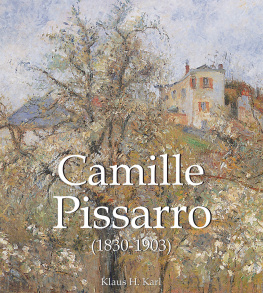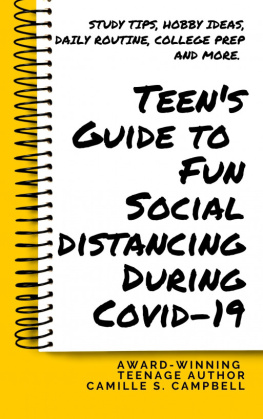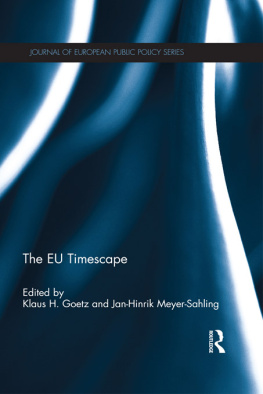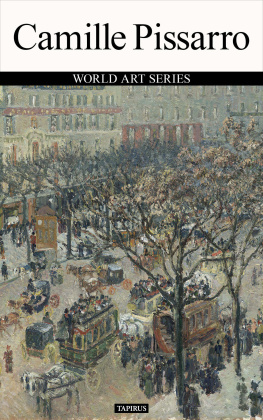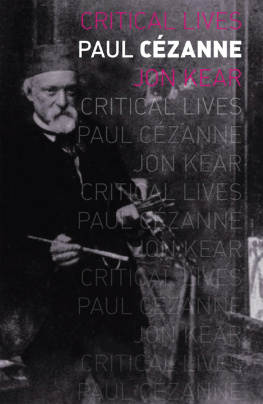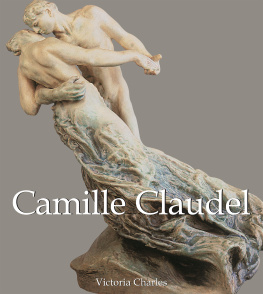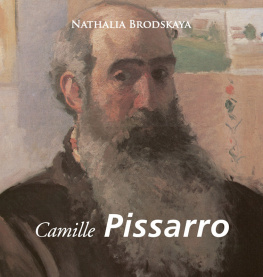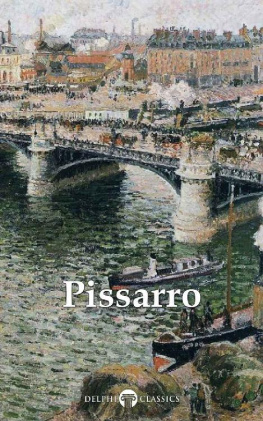Klaus H. Karl - Camille Pissarro
Here you can read online Klaus H. Karl - Camille Pissarro full text of the book (entire story) in english for free. Download pdf and epub, get meaning, cover and reviews about this ebook. publisher: Parkstone International, genre: Detective and thriller. Description of the work, (preface) as well as reviews are available. Best literature library LitArk.com created for fans of good reading and offers a wide selection of genres:
Romance novel
Science fiction
Adventure
Detective
Science
History
Home and family
Prose
Art
Politics
Computer
Non-fiction
Religion
Business
Children
Humor
Choose a favorite category and find really read worthwhile books. Enjoy immersion in the world of imagination, feel the emotions of the characters or learn something new for yourself, make an fascinating discovery.
- Book:Camille Pissarro
- Author:
- Publisher:Parkstone International
- Genre:
- Rating:5 / 5
- Favourites:Add to favourites
- Your mark:
- 100
- 1
- 2
- 3
- 4
- 5
Camille Pissarro: summary, description and annotation
We offer to read an annotation, description, summary or preface (depends on what the author of the book "Camille Pissarro" wrote himself). If you haven't found the necessary information about the book — write in the comments, we will try to find it.
Camille Pissarro — read online for free the complete book (whole text) full work
Below is the text of the book, divided by pages. System saving the place of the last page read, allows you to conveniently read the book "Camille Pissarro" online for free, without having to search again every time where you left off. Put a bookmark, and you can go to the page where you finished reading at any time.
Font size:
Interval:
Bookmark:
Author:
Klaus H. Karl
Layout:
Baseline Co. Ltd
61A-63A Vo Van Tan Street
4 th Floor
District 3, Ho Chi Minh City
Vietnam
Confidential Concepts, worldwide, USA
Parkstone Press International, New York, USA
Image-Bar www.image-bar.com
All rights reserved.
No part of this publication may be reproduced or adapted without the permission of the copyright holder, throughout the world. Unless otherwise specified, copyrights on the works reproduced lies with the respective photographers. Despite intensive research, it has not always been possible to establish copyright ownership. Where this is the case we would appreciate notification.
ISBN: 978-1-68325-676-2
Klaus H. Karl
Camille
Pissarro
(1830-1903)

What Pissarro says is true the effects colours produce through their harmonies or dischords should be boldly exaggerated.
Vincent Van Gogh
Contents

Self-Portrait (Camille Pissarro, A Self-Portrait), c. 1890
Eetching (zinc) 18.7 x 17.7 cm. Rosenwald Collection, National Gallery of Art, Washington, D.C.
1830:Jacob Camille Pissarro is born in St Thomas in the West Indies, to French Jewish parents.
1842:He is sent to a boarding school just outside Paris to receive an early education, where his first signs of artistic talent become apparent.
1847:Returns home to St Thomas to work in the family business, although he devotes much of his free time to drawing and sketching.
1852:Having little interest in the family business, Pissarro, accompanied by Danish painter Fritz Melbye, heads to Venezuela, where he works as an artist for two years.
1855:Arrives in Paris where he settles down to live, and visits the Exposition Universelle (Worlds Fair), which includes a large art section. He is impressed by Jean-Baptise Camille Corots landscape paintings, and begins studying at such institutions as the Ecole des Beaux-Arts and Acadmie Suisse, where he forms a friendship with Monet.
1859:Sends works to the official Salon, where he is admitted to exhibit.
1860:Moves in with Julie Vellay, his future wife.
1861:Meets Guillaumin and Czanne at the Charles Acadmie Suisse.
1863:Gets rejected by the Salon, and exhibits at the Salon des Refuss.
1866:Pissarro and his family settle down in Pontoise, where he would work frequently with Czanne. During this time, he fully develops his independent Impressionist style. Meets Manet in Caf Guerbois in Paris. Gets his works admitted to the Salon. Pissarro is singled out in a review of the Salon by the young literary figure Emile Zola.
1869:Pissarro and his family move to Louveciennes.
1870:Participates in his last official Salon. During the Franco-Prussian war, Pissarro resides in Brittany for a short period, and then seeks refuge in London with Monet. He leaves all his paintings behind in Louveciennes, most of which will be destroyed.
1871:Marries Julie Vellay, with whom he has seven children, five of which would later become artists.
1872:Forms a collaboration with Czanne, which marks an important part of art history.
1874:Takes part in the first Impressionist Exhibition, of which he was a key instigator. Pissarro is the only artist of the group to participate in all eight of these exhibitions. Joins Monet in a project to organise independent Impressionist exhibitions.
1876:Paints The Garden of Les Mathurins at Pontoise. He is among the first artists to divide colours, which is evident in this painting. Eugne Murer, the owner of a restaurant on the Boulevard Voltaire, asks Renoir and Pissarro to paint the interior of the restaurants dining-room, where he would feed groups of artists every week, free of charge.
1880:He begins to add figures to his work, giving them a more decorative character.
1884:Pissarro is financially stable enough to buy a house in ragny, where he will remain until his death.
1885:Experiments with new techniques and approaches, as he meets with a younger generation of artists, searching for fresh ideas. He is particularly attracted to Seurats style, which he tries to adopt, but with limited success.
1892:Large retrospective of Pissarros works, finally allowing him to gain international recognition.
1903:November 13 th , Pissarro dies in Paris at the age of seventy-three.
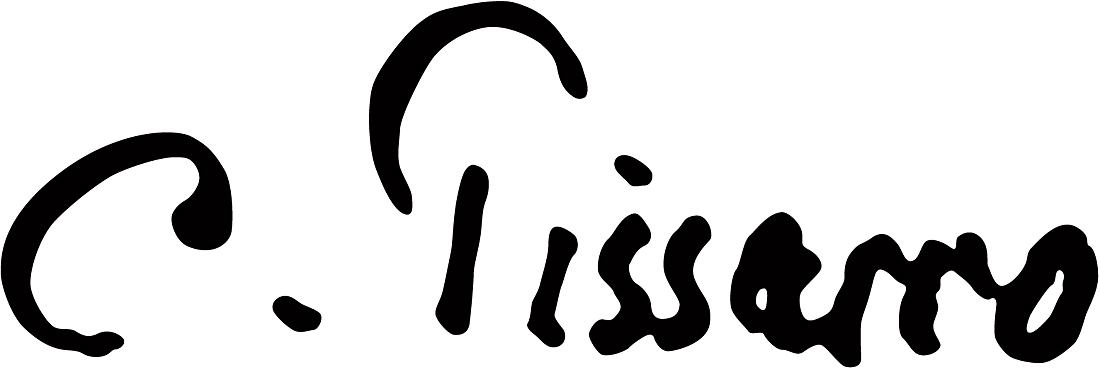
The prescient title of one of Claude Monets (1840-1926) paintings shown in 1874 in the first exhibition of the Impressionists, or as they called themselves then, the Socit anonyme des artistes, peintres, sculpteurs, graveurs (the Anonymous Society of Artists, Painters, Sculptors, and Engravers), was Impressionism: Sunrise. Monet had gone painting in his childhood hometown of Le Havre to prepare for the event, eventually selecting his best Havre landscapes for display. Edmond Renoir, journalist and brother of Renoir the painter, compiled the catalogue. He criticised Monet for the uniform titles of his works, for the painter had not come up with anything more interesting than View of Le Havre. Among these Havre landscapes was a canvas painted in the early morning depicting a blue fog that seemed to transform the shapes of yachts into ghostly apparitions. The painting also depicted smaller boats gliding over the water in black silhouette, and above the horizon the flat, orange disk of the sun, its first rays casting an orange path across the sea. It was more like a rapid study than a painting, a spontaneous sketch done in oils what better way to seize the fleeting moment when sea and sky coalesce before the blinding light of day? View of Le Havre was obviously an inappropriate title for this particular painting, as Le Havre was nowhere to be seen. Write Impression, Monet told Edmond Renoir, and in that moment began the story of Impressionism.
On 25 April 1874, the art critic Louis Leroy (1812-1885) published a satirical piece in the journal Charivari, that described a visit to the exhibition by an official artist. As he moves from one painting to the next, the artist slowly goes insane. He mistakes the surface of a painting by Camille Pissarro, depicting a ploughed field, for shavings from an artists palette carelessly deposited onto a soiled canvas. When looking at the painting he is unable to tell top from bottom, or one side from the other. He is horrified by Monets landscape entitled Boulevard des Capucines. Indeed, in Leroys satire, it is Monets work that pushes the academician over the edge. Stopping in front of one of the Havre landscapes, he asks what Impression: sunrise depicts. Impression, of course, mutters the academician. I said so myself, too, because I am so impressed, there must be some impression in here and what freedom, what technical ease! At which point he begins to dance a jig in front of the paintings, exclaiming: Hey! Ho! Im a walking impression, Im an avenging palette knife. Leroy called his article, The Exhibition of the Impressionists. With typical French finesse, he had adroitly coined a new word from the paintings title, a word so fitting that it was destined to remain forever in the vocabulary of the history of art.
Font size:
Interval:
Bookmark:
Similar books «Camille Pissarro»
Look at similar books to Camille Pissarro. We have selected literature similar in name and meaning in the hope of providing readers with more options to find new, interesting, not yet read works.
Discussion, reviews of the book Camille Pissarro and just readers' own opinions. Leave your comments, write what you think about the work, its meaning or the main characters. Specify what exactly you liked and what you didn't like, and why you think so.

